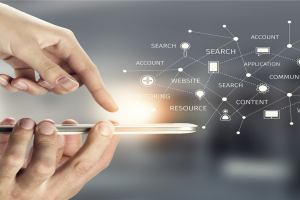Traditional methods including manual creation of scripts, scrubbing the data, and later loading it into a data warehouse or ETL, (extract-transform-load) was used to integrate data from different sources. These methods were adopted in the era of resource constraints and have now become very time-intensive, expensive, and error-prone, says Yash Mehta, an IoT and big data science specialist.
An enormous amount of time is required for sanitising the data because the source and target may not use the same schemas, formats, or types. Thus, these methods are expensive and require skilled manpower. The global Enterprise Data Integration market size is anticipated to reach USD 3843.4 million (€3312.03 million) by 2027, from USD 2300.8 million (€1982.70 million) in 2020, at a CAGR of 7.1% during 2021-2027.
Read the Global Enterprise Data Integration Market report to understand the driving factors in the growth of the Data Integration market.
Introduction
To explain Data Integration, it is the process of combining data from different sources and providing a unified view of the combined data. This process enables one to handle and manipulate all your data in a single interface and perform analytics (using statistics). With new centralised technology systems available for business processes, the sources and types of data continue to grow, and thus it becomes increasingly important to understand Data Integration methods and tools, which help in maintaining the quality of that data.
Importance of data integration
Data Integration is radical when an organisation has varied information stored in different applications.
Let’s discuss some of the issues which Data Integration helps to resolve:
- Data silos
A data silo, as the name suggests, is a repository of isolated data. In terms of business, it means that the different information is controlled by a particular business unit or department and is not available across the organisation. Organisations also face this problem if the software used for storing information is incompatible.
It becomes a daunting challenge for an organisation to bring the information stored in different sources together and draw qualitative inferences from it.
- Slow analysis
Data Analysts and leaders are heavily dependent on reliable data in today’s decision-making, and it takes a considerable amount of time to integrate and analyse that good data. Today, businesses need real-time data analysis to realise any business value. Thus, it requires a reliable and evolved system in place to integrate the data.
- Holistic view
When data is spread across different platforms, sources, or applications, it is difficult to have a holistic view of it. For example, an organisation’s customer data from different CRM devices or applications can vary for offline and online stores, but the organisation’s Data Team wants to map that data with the customer’s information and geographical information to do deep analysis for scaling up the Sales. The correlation of this information is important and requires the integration of all the CRM platforms, or else considerable time and effort will be required to integrate this data manually.
Methods and tools for data integration
The struggle of businesses is not lack of data, but data volume and its timely analysis. The massive data flowing from various cloud applications to IoT endpoints across organisations and industries makes the job of analysing data timely very difficult.
The process of connecting and routing data from source systems to target systems is achieved through a variety of data integration techniques (typical traditional or modern methods).
- Traditional Methods
The traditional methods are usually batched and do not provide the Data Analysts with the opportunity to perform real-time data analysis.
- Modern Methods
Modern data integration methods were built to evolve with the agile nature of data and adapt to the ever-changing needs of Data Integration. Some successful modern approaches are Automated ELT (extract-load-transform) and Cloud-based Data Integration.
- ELT basically shifts the transform step to the end of the data pipeline where you can load data before transforming it. In this way, the data warehouse remains a single source of truth. Thus, the integrity of the warehoused data was not compromised while performing the transformations.
- Cloud-based Data Integration helps businesses in combining their data from various sources (cloud application as well as on-premises systems) to usually (but not always) a cloud-based data warehouse. This integration of data results in improved operational efficiency and better internal communication for businesses. With more businesses operating with a hybrid mix of Software as a Service (SaaS) solutions and on-premises applications, experts have indicated that more than 90 percent of enterprises will incline more towards Cloud-based Data Integration. Such integration allows the real-time exchange of data and processes. The integrated data can then be accessed by several devices over a network or via the internet. Some common cloud-based Data Integration platforms are K2View Data Integration, Informatica Cloud Data Integration, Amazon Redshift, Snowflake, etc.
Getting started with modern data integration
With modern Data Integration approaches, the manual effort of managing and scrubbing the data sets, and later loading the data into the individual data warehouse environments has become obsolete. Now, you can store, stream, and deliver the data you need, when you need it, from any Cloud-based Data Integration platform. For example, K2View data integration is a data integration platform that manages data from disparate sources in any technology or format and models the data fields for business entities (e.g., customer, location, device, product). Next, this data is ingested into micro-Databases. Later, other data processing steps like Data masking, transformation (uses an in-memory database to perform data transformation at high speed), and enrichment are performed. Finally, this integrated data is sent to consuming applications.
Conclusion
In the world of Data Integration, modern data Integration approaches hold and offer many benefits, from lowering engineering costs and enriching data to reducing time to insight and increasing adaptability to changing.
The author is Yash Mehta, an IoT and big data science specialist.
Comment on this article below or via Twitter: @IoTNow_OR @jcIoTnow










